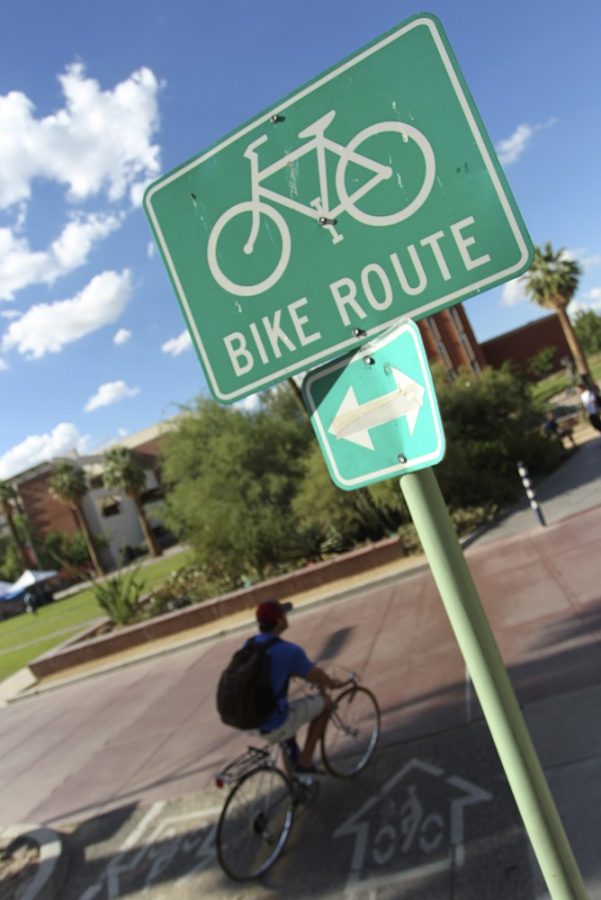A public workshop held on Thursday sought to collect feedback about how to improve pedestrian and bicycling safety both on and around campus.
The University of Arizona Area Bicycle and Pedestrian Study, initiated earlier this spring, is a collaborative project between Parking and Transportation Services, Pima Association of Governments and Alta Planning and Design, a nationwide organization that specializes in improving community bicycling and walking conditions. The study’s focus area includes a large radius around the university.
The purpose of the study is to make these alternative forms of transportation safer and has outlined five major objectives: Reduce the risk of collisions with pedestrians and bicyclists, make improvements to the existing infrastructure, define bicycling and walking paths, develop education programs to encourage more people to ride and bike to campus and create clear implementation strategies to continue improvements.
“We think we do a pretty good job with bicycles and pedestrians on campus right now, but we know we could do better,” said PTS Director David Heineking. “That’s the idea of this. If we take the average person who drives their car to campus and lives a couple miles away, what obstacles are there that keep that person from either walking or riding their bike to campus?”
Heineking said there are things PTS can do, like make it more convenient, easier and safer for people to ride their bike or walk to campus.
Rory Renfro, an Alta Planning and Design senior planner, said Alta serves as a consultant for the project, and the organization has worked with the UA on past projects like the Cat Wheels Bike Sharing Program. Alta will provide ideas regarding infrastructure, such as which corridors and routes are best for bike paths, as well as other technical solutions like how to fund the project.
The research phase of the project will end in March, followed by a design phase. Certain aspects of the project may take a number of years to complete, Renfro said.
Many of the workshop’s attendees were people who regularly ride and walk to campus already and are most likely to be impacted by the project. Some said they were pleased to see that steps were being taken to refine the network throughout and around the university.
“I like hearing that the campus community and the City of Tucson is making improvements, is looking at where we’re at now, and looking to see how we can improve things for pedestrians and cyclists,” said Joyce Orcutt, an accounting associate for PTS who regularly uses alternative transportation.
Dan Majewski, a recent graduate in regional development, who rides his bike often, also said he is glad that there are plans to make further improvements.
“My bike is my car, it’s the only way I get around,” Majewski said. “So, these are all issues that I deal with on a daily basis; issues of car conflicts and, especially on campus, bike-pedestrian conflicts. As a pedestrian and as a bicyclist, I see issues all the time.”
Those who don’t ride to campus on a regular basis but live near the UA were also interested in the study.
“I think it’s great, and I think it’s really helpful to have an agency like Alta Planning come in and share their expertise,” said Emily Yetman, a Tucson resident who lives within blocks of the university. “In them doing this, it brings together a lot of different people to have a conversation about what needs to change, and I think that’s really important.”
With the overall goal in mind to get more people walking and cycling to, around and on campus, Heineking said there are a number of benefits to making it a reality.
“It’s good for everybody,” he said. “It’s good for the environment, it’s good for the person who is riding their bike or walking, it prevents traffic congestion and it’s just a better overall route.”









